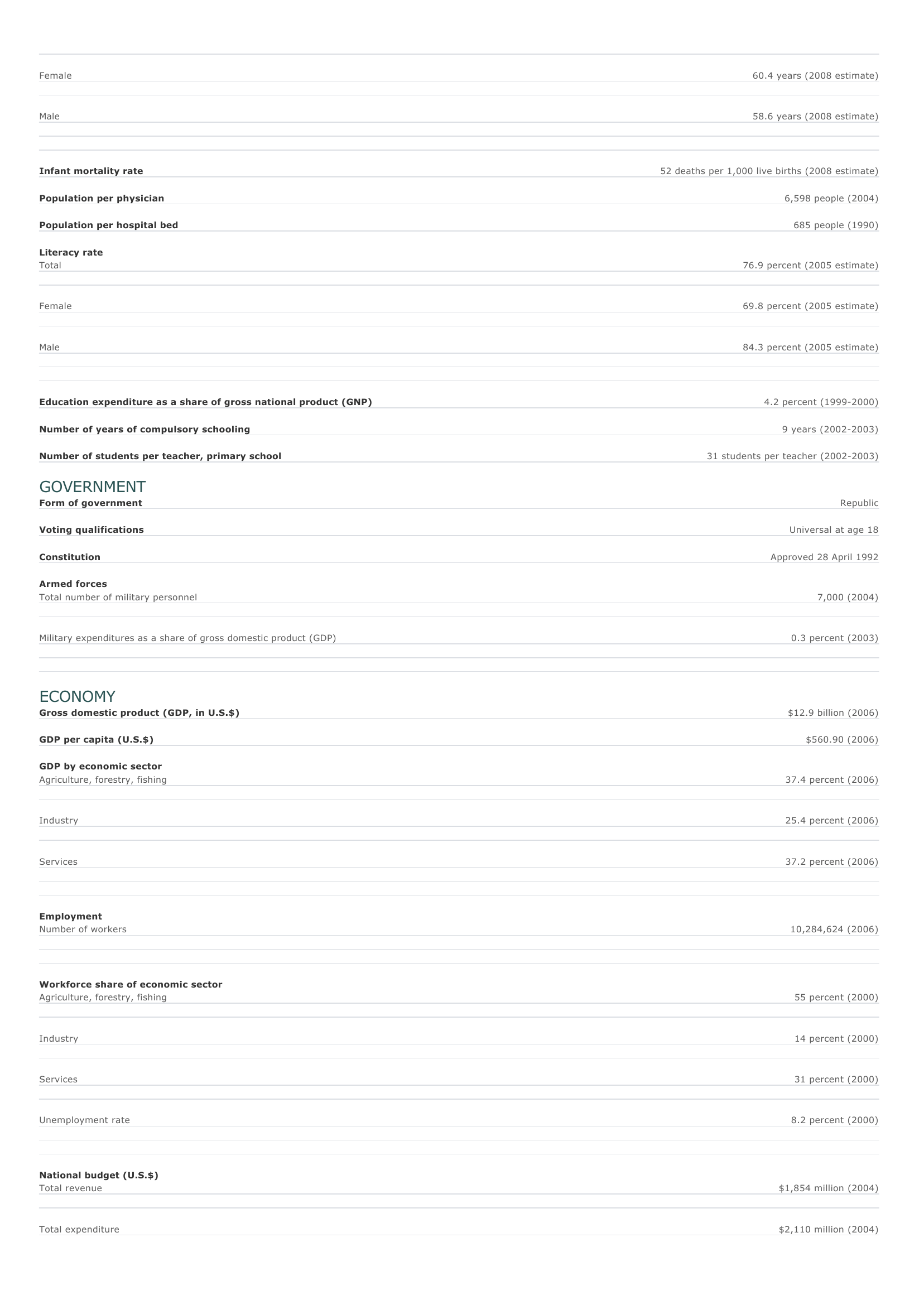
Ghana Facts and Figures. BASIC FACTS Official name Capital Area Republic of Ghana Accra 238,500 sq km 92,090 sq mi PEOPLE Population 23,382,848 (2008 estimate) Population growth Population growth rate 1.93 percent (2008 estimate) Projected population in 2025 30,536,326 (2025 estimate) Projected population in 2050 38,735,638 (2050 estimate) Population density 101 persons per sq km (2008 estimate) 262 persons per sq mi (2008 estimate) Urban/rural distribution Share urban 46 percent (2005 estimate) Share rural 54 percent (2005 estimate) Largest cities, with population Accra 1,847,000 (2003 estimate) Kumasi 399,300 (1990 estimate) T ema 180,600 (1990 estimate) Tamale 151,100 (1988 estimate) Sekondi 116,500 (1990 estimate) Ethnic Divisions Adangbe, Akuapem, Akyem, Ashanti, Bono, Dagomba, Ewe, Fante, Ga, Gonja, Kwahu, Mamprusi, Nzima, and others Languages English (official), Akan, Nzima, Dagbane, Ga, Ewe, other African languages Religious affiliations Ethnoreligionists or indigenous beliefs 24 percent Muslim 20 percent Protestant 17 percent Independent Christian 14 percent Roman Catholic 10 percent O ther 15 percent HEALTH AND EDUCATION Life expectancy Total 59.5 years (2008 estimate) Female 60.4 years (2008 estimate) Male 58.6 years (2008 estimate) Infant mortality rate Population per physician Population per hospital bed 52 deaths per 1,000 live births (2008 estimate) 6,598 people (2004) 685 people (1990) Literacy rate Total 76.9 percent (2005 estimate) Female 69.8 percent (2005 estimate) Male 84.3 percent (2005 estimate) Education expenditure as a share of gross national product (GNP) Number of years of compulsory schooling Number of students per teacher, primary school 4.2 percent (1999-2000) 9 years (2002-2003) 31 students per teacher (2002-2003) GOVERNMENT Form of government Republic Voting qualifications Universal at age 18 Constitution Armed forces Total number of military personnel Military expenditures as a share of gross domestic product (GDP) Approved 28 April 1992 7,000 (2004) 0.3 percent (2003) ECONOMY Gross domestic product (GDP, in U.S.$) GDP per capita (U.S.$) $12.9 billion (2006) $560.90 (2006) GDP by economic sector Agriculture, forestry, fishing 37.4 percent (2006) I ndustry 25.4 percent (2006) Services 37.2 percent (2006) Employment Number of workers 10,284,624 (2006) Workforce share of economic sector Agriculture, forestry, fishing 55 percent (2000) I ndustry 14 percent (2000) Services 31 percent (2000) Unemployment rate 8.2 percent (2000) National budget (U.S.$) Total revenue $1,854 million (2004) Total expenditure $2,110 million (2004) Monetary unit 1 new cedi (C), consisting of 100 pesewas Major trade partners for exports Netherlands, United States, United Kingdom, Germany, and Nigeria Major trade partners for imports Nigeria, United Kingdom, United States, Côte d'Ivoire, and China ENERGY, COMMUNICATIONS, AND TRANSPORTATION Electricity production Electricity from thermal sources 15.99 percent (2003 estimate) Electricity from hydroelectric sources 84.01 percent (2003 estimate) Electricity from nuclear sources 0 percent (2003 estimate) Electricity from geothermal, solar, and wind sources 0 percent (2003 estimate) Number of radios per 1,000 people 709 (1999 estimate) Number of telephones per 1,000 people 15 (2005) Number of televisions per 1,000 people 124 (2000 estimate) Number of Internet hosts per 10,000 people 0.17 (2003) Daily newspaper circulation per 1,000 people 14 (1996) Number of motor vehicles per 1,000 people 7.7 (1997) Paved road as a share of total roads 18 percent (2003) SOURCES Basic Facts and People sections Area data are from the statistical bureaus of individual countries. Population, population growth rate, and population projections are from the United States Census Bureau, International Programs Center, International Data Base (IDB) (www.census.gov). Urban and rural population data are from the Food and Agriculture Organization (FAO) of the United Nations (UN), FAOSTAT database (www.fao.org). Largest cities population data and political divisions data are from the statistical bureaus of individual countries. Ethnic divisions and religion data are largely from the latest Central Intelligence Agency (CIA) World Factbook and from various country censuses and reports. Language data are largely from the Ethnologue, Languages of the World, Summer Institute of Linguistics International (www.sil.org). Health and Education section Life expectancy and infant mortality data are from the United States Census Bureau, International Programs Center, International database (IDB) (www.census.gov). Population per physician and population per hospital bed data are from the World Health Organization (WHO) (www.who.int). Education data are from the United Nations Educational, Scientific and Cultural Organization (UNESCO) database (www.unesco.org). Government section Government, independence, legislature, constitution, highest court, and voting qualifications data are largely from various government Web sites, the latest Europa World Yearbook, and the latest Central Intelligence Agency (CIA) World Factbook. The armed forces data is from Military Balance. Economy section Gross domestic product (GDP), GDP per capita, GDP by economic sectors, employment, and national budget data are from the World Bank database (www.worldbank.org). Monetary unit, agriculture, mining, manufacturing, exports, imports, and major trade partner information is from the statistical bureaus of individual countries, latest Europa World Yearbook, and various United Nations and International Monetary Fund (IMF) publications. Energy, Communication, and Transportation section Electricity information is from the Energy Information Administration (EIA) database (www.eia.doe.gov). Radio, telephone, television, and newspaper information is from the United Nations Educational, Scientific and Cultural Organization (UNESCO) database (www.unesco.org). Internet hosts, motor vehicles, and road data are from the World Bank database (www.worldbank.org). Note Figures may not total 100 percent due to rounding. Microsoft ® Encarta ® 2009. © 1993-2008 Microsoft Corporation. All rights reserved.





